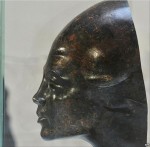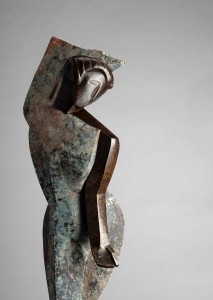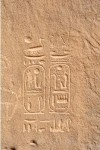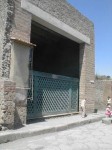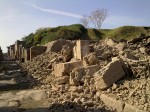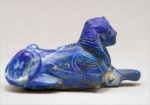 The Metropolitan Museum of Art will be returning 19 small artifacts to Egypt that have been in its collection for decades. Researchers in the museum’s Department of Egyptian Art determined that the pieces originally came from King Tutankhamun’s tomb.
The Metropolitan Museum of Art will be returning 19 small artifacts to Egypt that have been in its collection for decades. Researchers in the museum’s Department of Egyptian Art determined that the pieces originally came from King Tutankhamun’s tomb.
There had been questions about their provenance when the artifacts were acquired by the Met at various times from the 1920s through 1940s because even so close to Howard Carter’s 1922 discovery, the thousands of artifacts found in the tomb weren’t thoroughly documented. At that time the practice of partage — where the excavator was allowed to keep a portion of the artifacts found — was common, but as the decade it took Carter’s team to recover the enormous treasure wore on, the Egyptian government passed specific legislation to ensure that everything found in Tut’s tomb would remain property of Egypt. They even made Carter sign a waiver to that effect.
By an extraordinary coincidence, high quality artifacts from around King Tutankhamun’s time seemed to be turning up a lot in various collections in the ’20s and ’30s. Then when Carter died in 1939, his estate was found to be replete with just those sorts of objects. Lord Carnarvon’s was too.
The 19 objects now identified as indeed originating from the tomb of King Tutankhamun can be divided into two groups. Fifteen of the 19 pieces have the status of bits or samples. The remaining four are of more significant art-historical interest and include a small bronze dog less than three-quarters of an inch in height and a small sphinx bracelet-element, acquired from Howard Carter’s niece, after they had been probated with his estate; they were later recognized to have been noted in the tomb records although they do not appear in any excavation photographs. Two other pieces—part of a handle and a broad collar accompanied by additional beads—entered the collection because they were found in 1939 among the contents of Carter’s house at Luxor; all of the contents of that house were bequeathed by Carter to the Metropolitan Museum. Although there was discussion between Harry Burton (a Museum photographer based in Egypt, the Museum’s last representative in Egypt before World War II broke out, and one of Carter’s two executors) and Herbert Winlock about the origins of these works and about making arrangements for Burton to discuss with a representative of the Egyptian Museum in Cairo whether these works should be handed over to Egypt, that discussion was not resolved before Burton’s death in 1940. When the Metropolitan Museum’s expedition house in Egypt was closed in 1948, the pieces were sent to New York.
Now that the Met’s researchers have finally been able to pin down the Tut provenance, the museum is officially relinquishing title to Egypt. The artifacts won’t immediately go home. First they’ll spend a couple of months with their long-lost brothers and sisters at the Tutankhamun and the Golden Age of the Pharaohs at the Discovery Times Square Exposition. Then in January they’ll go back to the Met for 6 months to go on display in the permanent Egyptian collection.
In June 2011 they will finally return to Egypt where they will be featured in the Tutankhamun galleries at the Cairo Museum. At long last they will find a permanent home once the new Grand Egyptian Museum at Giza opens (scheduled for 2012).
